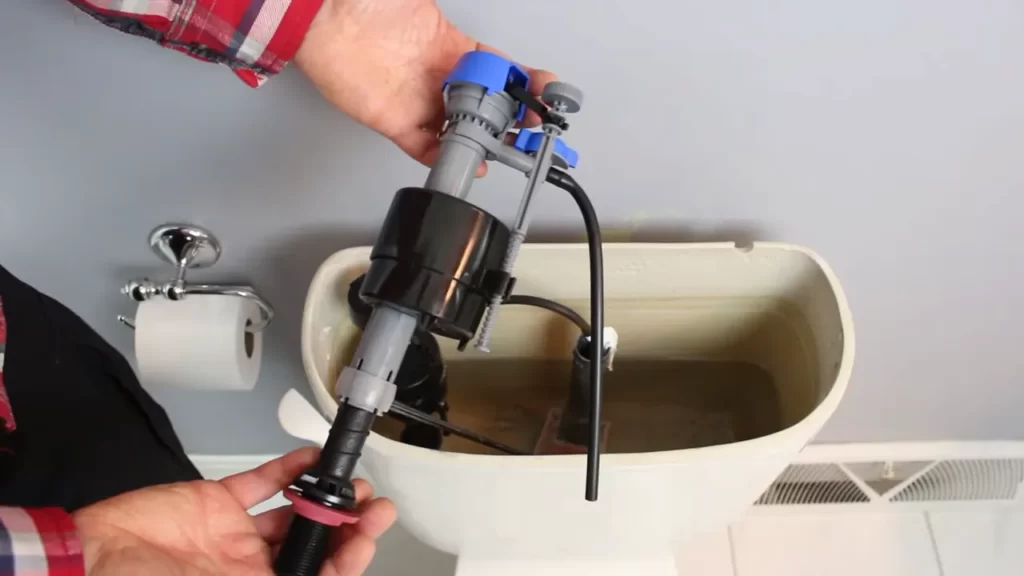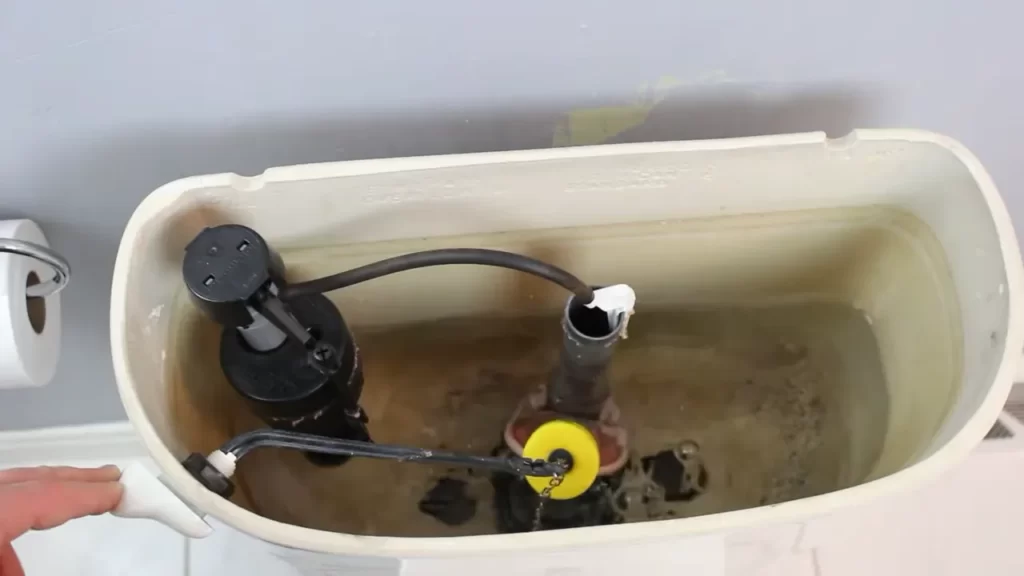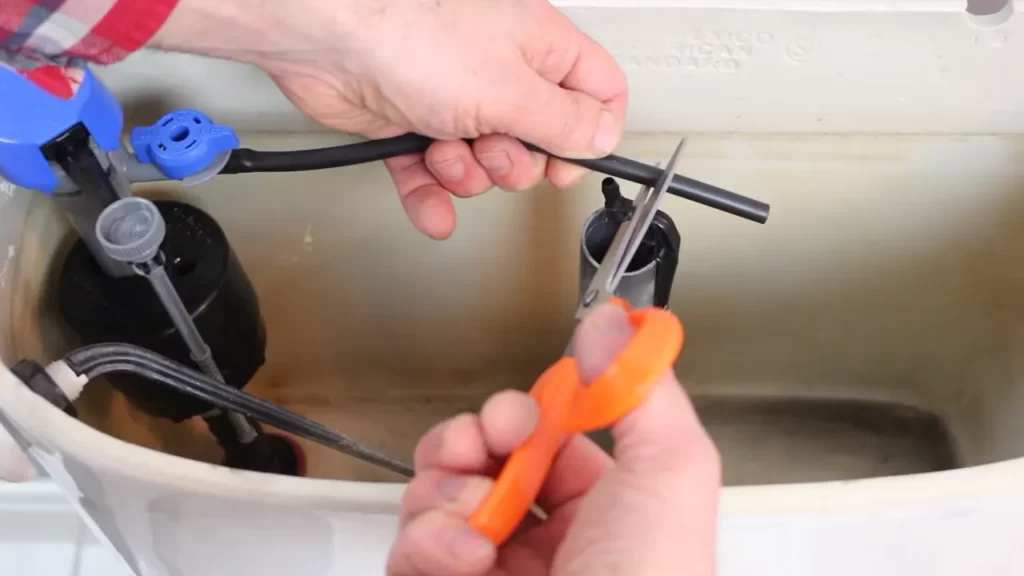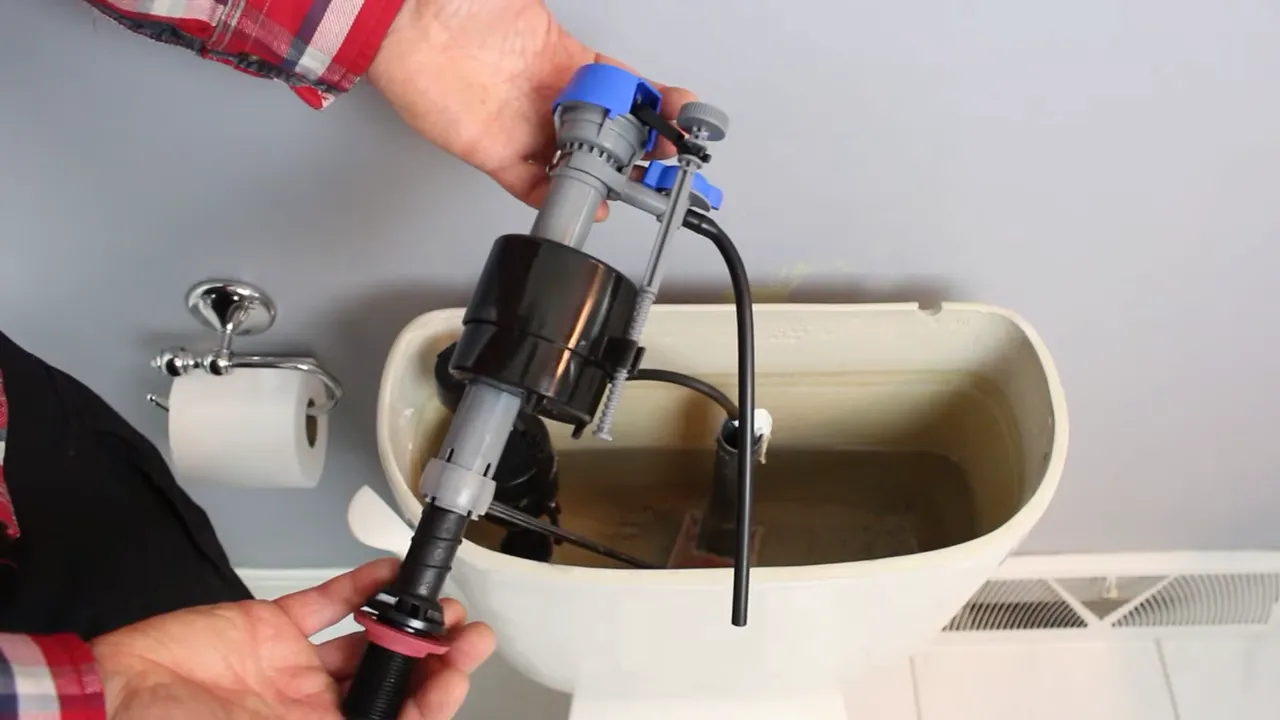To install a toilet pump, first, measure and cut the PVC pipe to the correct length, then attach it to the pump and the existing plumbing using adhesive. Installing a toilet pump is a straightforward process that can help solve issues with low water pressure or a lack of gravity flow in your toilet.
Whether you’re adding a new toilet in a basement or an area below the main sewer line, a toilet pump can efficiently move waste to the main drain. This guide will provide step-by-step instructions to help you install a toilet pump with ease.
By following these instructions, you can ensure a properly functioning toilet pump that will efficiently remove waste from your toilet and keep your bathroom clean and sanitary. So, let’s get started.
Choosing The Right Toilet Pump
When it comes to installing a toilet pump, choosing the right one is crucial. The right toilet pump can make all the difference in the efficiency and function of your bathroom. In this section, we will discuss the factors to consider when selecting a toilet pump, the different types of toilet pumps available, and how to determine the suitable toilet pump for your needs.
Factors to Consider when Selecting a Toilet Pump
Before making a purchase, it’s important to consider several factors that can affect the performance and longevity of your toilet pump. These factors include:
- Power and Capacity: One of the most important factors to consider is the power and capacity of the toilet pump. The higher the power and capacity, the more efficient the pump will be in handling waste.
- Noise Level: If you value a quiet bathroom experience, it’s important to choose a toilet pump that operates quietly. Look for pumps with noise reduction features to ensure a peaceful atmosphere.
- Compatibility: Not all toilet pumps are compatible with every toilet system. Make sure to check the compatibility of the pump with your specific toilet system before making a purchase.
- Ease of Installation: Installing a toilet pump can be a complex process, so it’s important to choose a pump that is easy to install. Look for pumps with clear installation instructions and user-friendly features.
- Durability: A toilet pump is an investment, so it’s important to choose one that is built to last. Look for pumps made of high-quality materials that are resistant to corrosion and wear.
Understanding Different Types of Toilet Pumps
There are several different types of toilet pumps available on the market. Understanding the different types can help you make an informed decision. The main types of toilet pumps include:
- Macerator Pump: This type of pump is designed to break down waste into small particles, making it easier to move through pipes.
- Grinder Pump: Grinder pumps are specifically designed to handle solid waste and are ideal for homes with a lot of solid waste materials.
- Upflush Toilet System: Upflush toilet systems utilize a pump to move waste upward, allowing for the installation of a toilet in areas where traditional plumbing is not possible.
- Composting Toilet System: Composting toilet systems convert waste into compost, eliminating the need for water and traditional plumbing.
Determining the Suitable Toilet Pump for Your Needs
Choosing the suitable toilet pump for your needs depends on various factors such as the layout of your bathroom, the number of users, and the type of waste you’ll be dealing with. Consider the following factors when determining the right pump for your needs:
- Bathroom Layout: If your bathroom is located below the main sewage line, you may need an upflush toilet system. This type of pump can efficiently move waste upward.
- Number of Users: If there are multiple users in your household, you’ll need a toilet pump with a higher capacity to handle the increased amount of waste.
- Type of Waste: If you primarily deal with solid waste, a grinder pump may be the best option. However, if you’re looking for a more eco-friendly solution, a composting toilet system might be suitable.
By considering these factors and understanding the different types of toilet pumps available, you can confidently choose the right toilet pump for your bathroom. A well-selected toilet pump will ensure smooth and efficient waste removal, providing a pleasant and hassle-free bathroom experience.

Preparing For Installation
Gathering the Necessary Tools and Materials
Before starting the installation process, it is important to gather all the necessary tools and materials. By having everything ready at hand, you can ensure a smoother and more efficient installation process. Here is a list of the essential tools and materials you will need:
| Tools | Materials |
|---|---|
| Adjustable wrench | New toilet pump kit |
| Screwdriver | Plumber’s putty |
| Bucket | Bolts and nuts |
| Towel | Wax ring |
Make sure you have all of these tools and materials readily accessible before you proceed with the installation.
Shutting off the Water Supply
Before removing the existing toilet and installing the new toilet pump, you need to shut off the water supply to avoid any potential leaks or water damage. Here are the steps to shut off the water supply:
- Locate the water shut-off valve, typically found near the base of the toilet.
- Turn the valve clockwise to shut off the water flow.
Once the water supply is shut off, flush the toilet to drain any remaining water in the tank.
Removing the Existing Toilet
Now that the water supply is turned off, it’s time to remove the existing toilet. Follow these steps:
- Remove the tank cover by lifting it off.
- Disconnect the water supply line from the bottom of the tank using an adjustable wrench.
- Loosen and remove the retaining nuts located on the base of the toilet.
- Gently rock the toilet back and forth to break the seal with the wax ring.
- Lift the toilet straight up and place it carefully on a towel or piece of cardboard to prevent any damage or spills.
With the existing toilet removed, you are now ready to proceed with the installation of the new toilet pump.

Installing The Toilet Pump
Installing a toilet pump is a necessary step in certain plumbing situations, such as when you want to add a bathroom in a basement or any space where plumbing fixtures are below the main sewer line. A toilet pump, also known as a macerator pump, is designed to grind up waste and pump it uphill to the main sewer line. In this section, we will guide you through the process of installing a toilet pump, breaking it down into three easy steps: Positioning the Toilet Pump Correctly, Connecting the Pump to the Toilet and Plumbing System, and Securing the Toilet Pump in Place.
Positioning the Toilet Pump Correctly
The first step in installing a toilet pump is to properly position it. To ensure effective operation and minimize noise, place the pump as close as possible to the toilet. Ideally, the pump should be positioned directly behind or beside the toilet. It is also important to choose a location near the existing plumbing lines and electrical outlets. Before securing the pump in place, make sure the area is clean and free from any debris.
Connecting the Pump to the Toilet and Plumbing System
Once the toilet pump is positioned correctly, the next step is to connect it to the toilet and plumbing system. Start by removing the existing toilet and its wax ring. Next, place a new wax ring on top of the toilet flange, ensuring it is centered. Carefully align the toilet pump’s discharge outlet with the flange opening, and gently lower the toilet onto the wax ring. Apply even pressure to ensure a good seal.
After the toilet is in place, it’s time to connect the pump to the plumbing system. Use PVC pipes and fittings to route the discharge pipe from the pump to the existing plumbing drain line. Measure and cut the appropriate lengths of pipe, using a hacksaw or PVC pipe cutter. Connect the pipes using PVC primer and cement, following the manufacturer’s instructions. Double-check that all connections are secure and leak-free.
Securing the Toilet Pump in Place
Once the toilet pump and plumbing connections are in place, it’s essential to secure the pump to the floor. Start by marking the holes for the mounting brackets or screws on the floor. Drill the holes, making sure they are centered and aligned with the pump. Secure the pump to the floor using the appropriate hardware, such as screws or brackets, provided by the manufacturer. Ensure that the pump is stable and does not move or wobble.
With the toilet pump properly positioned, connected to the toilet and plumbing system, and secured in place, you are now ready to test its functionality. Ensure that all connections are tight and double-check that there are no leaks. Once you have verified that everything is working correctly, you can proceed to install the toilet seat and cover, and your toilet pump installation is complete.

Testing And Troubleshooting
Once you have successfully installed a toilet pump, it is important to thoroughly test and troubleshoot it to ensure proper functioning. Testing and troubleshooting will help you identify any potential issues and address them before they become major problems. In this section, we will cover the steps to check for proper connection and operation, troubleshoot common issues with toilet pumps, and ensure efficient plumbing with the installed toilet pump.
Checking for Proper Connection and Operation
After installing a toilet pump, it is crucial to check for proper connection and operation to ensure that it is functioning correctly. Here are a few steps you can follow:
- Inspect the connections: Start by visually inspecting all the connections to ensure they are tight and secure. Check for any visible leaks or loose fittings.
- Test the power supply: Make sure that the toilet pump is properly connected to a power source and that the power supply is functioning. You can do this by checking the circuit breaker or fuse box.
- Turn on the pump: Once you have confirmed the power supply, turn on the toilet pump and listen for any unusual sounds or vibrations. This will help you determine if the pump is operating smoothly.
Troubleshooting Common Issues with Toilet Pumps
Even with proper installation, toilet pumps can sometimes encounter issues. Here are some common problems you may come across and ways to troubleshoot them:
| Issue | Troubleshooting |
|---|---|
| The pump does not turn on. |
|
| The pump is making unusual noises. |
|
| The pump is not effectively pumping waste. |
|
Ensuring Efficient Plumbing with the Installed Toilet Pump
Efficient plumbing is essential when it comes to the operation of your toilet pump. Here are some tips to ensure efficient plumbing with the installed toilet pump:
- Regular maintenance: Perform routine maintenance checks on the toilet pump to keep it in good working condition. This may include cleaning the impeller, inspecting connections, and lubricating moving parts.
- Inspect the level sensors: Check the level sensors regularly to ensure they are functioning properly. These sensors help control the pump’s operation and prevent overflow.
- Proper disposal: Only flush human waste and toilet paper down the toilet to prevent clogs and strain on the pump.
- Monitor water pressure: Keep an eye on the water pressure in your plumbing system. High water pressure can put undue stress on the toilet pump and decrease its lifespan.
- Consider professional inspection: If you encounter persistent issues or suspect a larger problem, it is advisable to seek professional help for a comprehensive inspection and repair.
By following these steps and ensuring efficient plumbing, you can keep your toilet pump in optimal condition, prolong its lifespan, and avoid costly repairs or replacements.

Maintaining Your Toilet Pump
Maintaining your toilet pump is essential for ensuring it functions properly and continues to provide efficient waste removal from your bathroom. Regular cleaning and maintenance, along with identifying and fixing leaks or malfunctions promptly, can help extend the lifespan of your toilet pump.
Regular Cleaning and Maintenance Tips
Regularly cleaning and maintaining your toilet pump is crucial for preventing clogs, odors, and other issues. Here are some simple yet effective tips to keep your toilet pump in optimal condition:
- Start by turning off the power supply to the toilet pump to prevent any accidents. This is particularly important when performing any maintenance or cleaning tasks.
- Remove the toilet lid and inspect the pump chamber for any debris, such as toilet paper or foreign objects. Use gloves and a scoop or tongs to remove any solid items.
- Flush clean water through the pump to rinse away any remaining debris or residue.
- Regularly clean the pump’s intake and discharge valves using a mild detergent and a brush. Ensure thorough cleaning to prevent any build-up that may impair the pump’s performance.
- Inspect the pump’s impeller, which is responsible for breaking down waste. Remove any hair or other materials that may have wrapped around it.
- Check all seals and gaskets for signs of wear or damage. Replace any faulty components promptly to prevent leaks.
- After cleaning, dry the pump chamber thoroughly before reassembling.
Identifying and Fixing Leaks or Malfunctions
Even with regular maintenance, leaks or malfunctions can still occur with your toilet pump. Identifying and fixing these issues promptly can prevent further damage and ensure your toilet pump operates smoothly. Here are some steps to take when dealing with leaks or malfunctions:
- Check for any visible leaks around the pump or from the pipes connected to it. Look for signs of water damage or puddles on the floor.
- Inspect the pump for any strange noises or vibrations while it is running. Unusual sounds can indicate an issue with the motor or impeller.
- If you notice any leaks or unusual sounds, it is important to turn off the power supply and water source immediately to prevent further damage.
- Once the power and water supply are off, visually inspect all connections and seals for signs of wear or damage.
- Tighten any loose connections or replace any faulty seals to fix leaks.
- If you are unable to identify or fix the issue yourself, it is advisable to consult a professional plumber or technician for assistance.
Extending the Lifespan of your Toilet Pump
To maximize the lifespan of your toilet pump and avoid costly repairs or replacements, consider the following tips:
- Perform regular maintenance and cleaning as outlined earlier in this post.
- Be mindful of the items you flush down the toilet. Avoid flushing anything other than toilet paper and waste to prevent clogs and damage to the pump.
- Monitor water levels and pressure regularly to ensure they are within the recommended range for your toilet pump.
- Address any plumbing issues promptly, such as clogs or pipe leaks, as they can affect the performance of your toilet pump.
- Consider installing a water softener if you live in an area with hard water. Hard water can cause mineral buildup, which can affect the pump’s efficiency.
By following these tips, you can maintain your toilet pump effectively, troubleshoot common issues, and extend its lifespan, allowing for trouble-free waste removal and a more efficient bathroom.
Safety Precautions And Tips
Safety precautions and tips are crucial when it comes to installing a toilet pump. Following proper guidelines can ensure a smooth and effective installation process, while also preventing any potential accidents or damage. Here are some key safety precautions and tips to keep in mind:
Following Safety Guidelines when Installing a Toilet Pump
When installing a toilet pump, it is essential to adhere to safety guidelines in order to protect yourself and ensure a safe working environment. Here are a few important safety precautions to follow:
- Always wear protective gear, such as gloves and safety goggles, to shield yourself from any potential hazards or chemical spills.
- Before beginning the installation, make sure to turn off the water supply and disconnect the power source to the toilet. This will help prevent any unexpected water leaks or electrical shocks.
- Take extra caution when handling sharp tools or working with electrical components. Make sure to use insulated tools when necessary and avoid working in wet conditions.
- Read and understand the manufacturer’s instructions thoroughly before starting the installation. Following the specific guidelines provided by the manufacturer will ensure proper installation and prevent any accidents or mistakes.
- Keep the workspace clean and tidy. Remove any obstacles or clutter that may impede your movement or cause accidents.
- If you are unsure about any step of the installation process or lack the necessary skills and experience, it is always recommended to seek professional assistance. Hiring an experienced plumber or technician can not only ensure a safe installation but also save you time and effort.
Tips for Optimal Performance and Efficiency
Once you have installed the toilet pump, there are a few tips you can follow to optimize its performance and ensure maximum efficiency:
- Regularly inspect and clean the toilet pump to remove any debris or buildup that may hinder its functionality. This will help maintain its efficiency and prevent clogs or blockages.
- Check for any leaks or unusual sounds coming from the pump. If you notice any issues, it is important to address them promptly to avoid further damage or malfunctions.
- Consider using water-saving fixtures and appliances to reduce water consumption and increase the efficiency of the toilet pump.
- It is recommended to avoid flushing any non-biodegradable items or excessive amounts of toilet paper, as this can lead to clogs and put strain on the pump.
- Follow a regular maintenance schedule and consult the manufacturer’s recommendations for any specific maintenance tasks or intervals.
Contacting a Professional if Needed for Assistance
If you encounter any challenges or difficulties during the installation process or if you are unsure about any aspect of the task, it is best to contact a professional for assistance. A qualified plumber or technician will have the expertise and knowledge to handle the installation safely and efficiently. Don’t hesitate to reach out for professional help to ensure the proper functioning and longevity of your toilet pump.
Frequently Asked Questions
How Do You Replace A Toilet Tank Pump?
To replace a toilet tank pump, first, shut off the water supply and flush the toilet to empty the tank. Disconnect the water supply line and remove the old pump by unscrewing it from the bottom of the tank. Install the new pump by screwing it into place and reconnect the water supply line.
Finally, turn on the water supply and test the pump by flushing the toilet.
Does A Toilet Need A Pump?
No, a toilet does not need a pump. It relies on gravity to flush the waste down the drain.
Can I Replace A Toilet Fill Valve Myself?
Yes, you can replace a toilet fill valve by yourself.
How Does A Toilet Pump Work?
A toilet pump works by using a motor to generate suction that pulls waste and water from the toilet bowl into the sewage system. When you flush, the pump activates, creating suction to clear the waste. It works quickly and efficiently to keep your toilet clean and functional.
Conclusion
To sum up, installing a toilet pump requires careful attention to detail and following the right steps. By understanding the essential components and following the necessary procedures, you can successfully install a toilet pump. Remember to gather all the required tools, turn off the water supply, and connect the pump correctly.
With the right approach, you can ensure a smooth installation process and enjoy the benefits of an efficient and functional toilet system.
